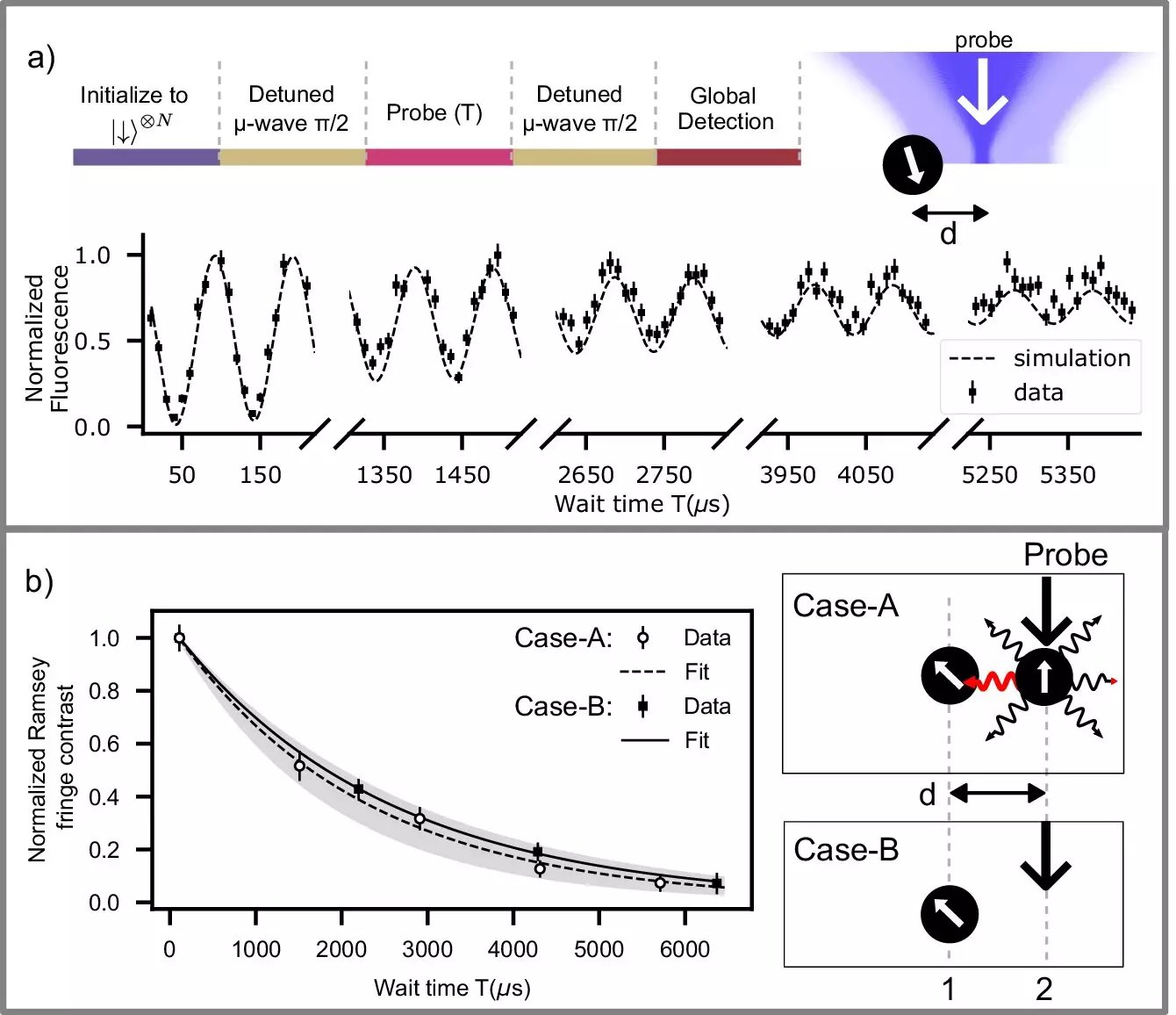Quantum information operates on principles that defy classical mechanics, leading to fascinating yet highly delicate systems known as qubits. These fundamental units have the potential to revolutionize computing and security, but they come with a significant drawback: they are exceptionally prone to disturbances from environmental factors. The integrity of qubits is threatened during experiments, particularly when inadvertent measurements occur, which can destroy the delicate quantum states. This issue becomes especially prominent in advanced quantum operations, such as quantum error correction, which relies on maintaining qubit states while measuring others. Thus, devising effective strategies for preventing accidental measurements is crucial for progress in quantum technology.
A team of researchers at the University of Waterloo has made significant strides toward overcoming one of the biggest challenges in quantum experiments: measuring and resetting a trapped ion qubit without impacting neighboring qubits. This achievement, led by Rajibul Islam at the Institute for Quantum Computing, not only enhances our understanding of qubit dynamics but also opens the door to improved quantum processors and faster quantum simulations. The researchers have successfully demonstrated that it is feasible to manipulate one qubit while shielding others from disturbances, even when these qubits are positioned only a few micrometers apart—teeny distances within the quantum realm but critical for traditional relational frameworks.
Building upon earlier successes, including the innovative use of programmable holographic technology in 2021, the team’s latest endeavours illustrate the viability of targeting specific qubits for destructive measurements while preserving the quantum coherence of their neighbors. This represents a pivotal evolution in the quest to develop reliable methods for quantum information management.
Central to this achievement is the precise control of laser light, a remarkable feat made possible by the integration of holographic technology with traditional ion traps. The use of lasers adds a layer of complexity to qubit manipulation, as their interaction with qubits can lead to unintended consequences. For instance, scattered photons from a targeted qubit can inadvertently affect nearby qubits, which presents a significant hurdle in maintaining quantum states.
The Waterloo research team achieved over 99.9% fidelity in preserving a qubit’s state while another qubit underwent resetting, demonstrating the effectiveness of their advanced light control techniques. Their methodology contradicts the prevailing belief that performing mid-circuit measurements without displacing qubits was implausible. Their findings suggest a more hopeful reality for future quantum mechanics applications by validating that fidelity in quantum measurements can be achieved without relocating qubits further apart—a methodology that adds delays and noise to the processes.
Crosstalk, the interference from neighboring qubits, continues to emerge as one of the most critical issues in quantum experiments. The Waterloo team had to meticulously manage the laser light’s intensity, ensuring that the operations conducted on the target qubit did not compromise the quantum states of those in proximity. The challenge of conducting mid-circuit measurements is intricately linked to the timing of interaction and the mechanical behaviors of light with matter at the microscopic level.
In advance of their work, successful mid-circuit measurements typically required moving target qubits far apart—often hundreds of microns away. The Waterloo approach showcases an elegant solution that demonstrates high-speed operation within an improved framework, eliminating the need for cumbersome spatial adjustments. This innovative tactic advances both the accessibility and realization of producing stable quantum computations.
Paving the Way for Future Quantum Technologies
As the research community strives for greater efficiency in quantum processing, the pathways paved by these developments could serve a myriad of applications. Implementing error correction and refining quantum computing capabilities will greatly benefit from the capacity to perform rapid qubit manipulation. Innovations rooted in precise control of quantum interactions will likely be instrumental in accelerating advancements within quantum simulations.
The remarkable breakthrough by the University of Waterloo researchers signifies a considerable leap forward in securing and leveraging the fragile nature of quantum information. As scientists and engineers continue to explore the complexities of quantum technologies, the insights gained from this study will help forge new directions in quantum hardware development, thereby enhancing the reliability and performance of future quantum applications.

